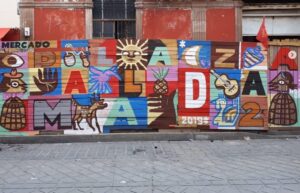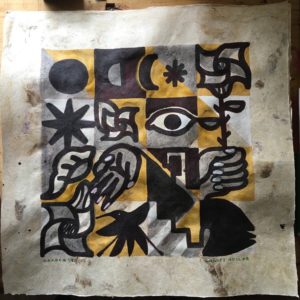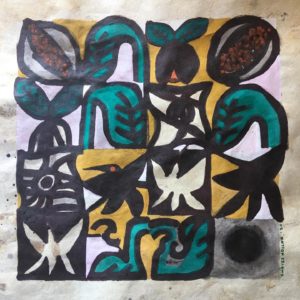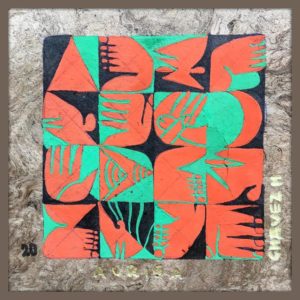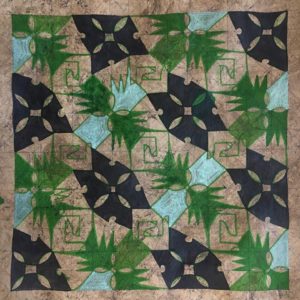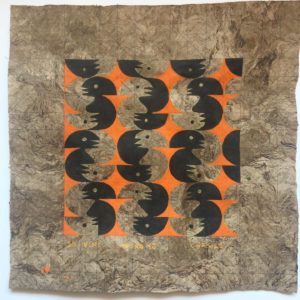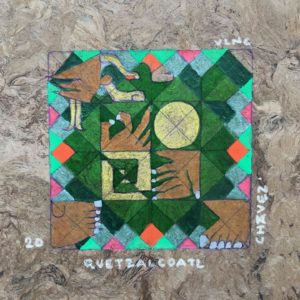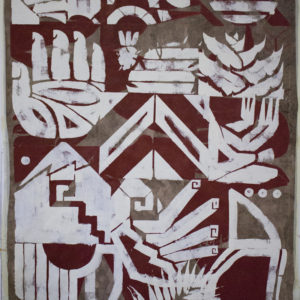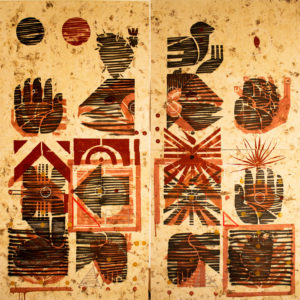Street Art Basics: A Mural of Understanding
Whether you’re an art aficionado or simply find joy in the vibrant tapestry of city streets, street art has an undeniable allure. It’s the poetry of the urban landscape, a canvas where social commentary, creativity, and gritty beauty converge. Today, we’re unraveling the textured layers of street art basics, exploring this art form that breathes life into concrete jungles.
When the walls speak, we should listen. Join us as we highlight key essentials of understanding street art, appreciating the rebels, visionaries, and everyday heroes who turn the mundane into the extraordinary.
The Canvas Beneath the Concrete
To discuss street art is to acknowledge its unique canvas—the streets, alleys, and abandoned walls of our cities. These settings aren't accidental; they're chosen deliberately to democratize art, to present it to the masses free from the confines of galleries and museums.
Urban Art vs. Graffiti
The distinction between urban art and graffiti isn't just nuanced; it's part of an ongoing cultural conversation. Graffiti, often the underpinning of street art, is the art of personal expression, sometimes anonymous, sometimes subversive. Urban art, a broader category, encompasses everything from sanctioned murals to guerilla installations, with an evolving relationship with the city and the community.
Contribution to the City
Street art also reflects and shapes the identity of a city. Its presence has economic, social, and cultural implications that sprawl through urban spaces, speaking to local history, politics, and the people who dwell there. But its impermanence challenges the viewer to appreciate art's transient nature, a reminder that even the most intricate pieces are part of a dynamic and evolving cityscape.
The Rebel’s Palette


Beneath the layers of stencils, tags, and color lies a larger narrative of rebellion. Street art is often the voice of the voiceless, a bold statement against the establishment and societal norms. From the poignant works of Banksy to the politically charged murals of Shepard Fairey, street art challenges and refuses to be irrelevant.
Seizing Public Spaces
Street artists stake a claim to public spaces, displaying works that are noncompliant with traditional forms of artistic expression. These acts of assertion incite a certain kind of public dialogue, forcing passersby to witness and engage with the visual rhetoric that would otherwise be penned in invisibility or erased from the collective consciousness.
Battling Stereotypes
Despite its aesthetic and social significance, street art often finds itself at the mercy of pervasive graffiti stereotypes. Yet, these misconceptions fail to recognize the movement's artistry, its role in cultural exchange, and its ability to bridge divides. Street art is a mosaic of diversity, where different styles and themes are juxtaposed, collaborating in a harmonious discord that encapsulates the cacophony of city life.
Technique and Tools of the Trade
Street artists employ an array of techniques and tools that vary in complexity and message. It is the mark of their craft, their methodology, and their chosen instrument that give street art its rich visual language and subtext.
Stencils and Spray Paint
The stencil, a rapid and repeatable form of image-making, has become synonymous with the street art movement. When paired with the immediacy of spray paint, it produces striking designs that can transform a space within minutes, echoing the urgency of the messages they carry.
Wheat Paste and Poster Art
Another favorite among street artists, the technique of wheat-pasting involves applying a simple adhesive mixture made from a combination of flour and water. This glue fuses intricately designed posters to walls, ensuring a visibility that is as ephemeral as it is powerful, echoing the temporality of the messages they carry.
Street Art’s Relationship with Society
The symbiotic relationship between street art and society is one of dialogue, dissent, and, at times, discord. It represents a form of art that is profoundly engaged with social issues, from the preservation of indigenous cultures to commentary on globalization and consumerism.
Cultural Integration
Street art is a tapestry of culture, a reflection of urban life that echoes the diverseness of its inhabitants. It draws upon and informs the culture it is embedded in, serving as both a mirror and a messenger that communicates across social, racial, and economic boundaries.
Legality and Advocacy
Debates around the legality of street art are as old as the movement itself. Artists and organizations often advocate for its right to exist, highlighting its role in community-building and its often transient nature. The art form's struggle for recognition in the judicial and cultural arenas mirrors the societal issues it so fiercely represents.
Preservation and Respect for the Art
Street art's ephemeral nature makes its preservation a complex endeavor. Artworks that capture a zeitgeist, that are at once of and beyond their time, often face the inevitability of impermanence. But this transitory quality is as much a part of their essence as the message they convey.
Documenting the Art
The efforts to document street art through photography, books, and dedicated websites are more than mere archival acts. They are tributes to an art form that defies capture, a testament to its enduring legacy even as it evolves in urban settings across the globe.
Ensuring Conservation
In the face of its transience, initiatives are dedicated to the conservation of street art, attempting to bridge the gap between permanence and the art's inherent temporality. These undertakings seek to honor the intentions of the artists, ensuring that their messages live on, even as the streets transform.
Navigating the Street Art World
For many, street art is a world waiting to be discovered, a universe filled with its own history, legends, and culture. Navigating this space requires more than an aesthetic eye—it necessitates an understanding and respect for the narrative that defines the movement.
Engaging with the Community
Street art is a community-based art form, one that thrives on interaction and engagement. To truly appreciate street art is to engage with this network, to attend festivals, walk tours, and connect with the artists or their advocates, thereby witnessing firsthand the art's dialogue with its surroundings and spectators.
Supporting the Movement
Whether it's by supporting local artists or championing the cause through awareness, there are numerous ways to play a role in the ongoing street art saga. By doing so, you aren't just supporting a vibrant cultural movement—you're contributing to the storytelling and soul of the streets.
Energetic Audacity


Street art is more than just a splatter of color or a bold statement—it's a window into the soul of the city. It immerses us in the voice of the disenfranchised, delights us with its aesthetic audacity, and invites us to ponder the profound in the pulse of city life.
For the art enthusiast, the urban explorer, or the passerby, street art beckons with its raw, unadulterated energy, challenging us to look beyond the paint and into the very essence of the city's heartbeat.
In our exploration of street art basics, we've barely scratched the surface of what it means to engage with this multifaceted cultural phenomenon. For every brushstroke and tag, there is a story. And like the best stories, the ones told in the streets captivate, inspire, and resonate.
Join us in celebrating this vehemence of visual expression, share your favorite street art finds, and continue the narrative that sprawls boldly across the walls of the world. Remember, when the streets speak, they speak to us all.
If you enjoy Mexican Street Art, we are sure you'll fall in love with Cawamo's pieces.
-


 Urban symbolic art. No title by Cawamo$30,000.00
Urban symbolic art. No title by Cawamo$30,000.00 -


 Urban symbolic art. Still life by Cawamo$30,000.00
Urban symbolic art. Still life by Cawamo$30,000.00 -


 Urban symbolic art. Internal search by Cawamo$30,000.00
Urban symbolic art. Internal search by Cawamo$30,000.00 -


 Urban symbolic art. Auriga by Cawamo$30,000.00
Urban symbolic art. Auriga by Cawamo$30,000.00 -


 Symbolic art. Self-Seeking by Cawamo$30,000.00
Symbolic art. Self-Seeking by Cawamo$30,000.00 -

 Symbolic art. Xochiquetzal by Cawamo$21,000.00
Symbolic art. Xochiquetzal by Cawamo$21,000.00 -

 Mexican art. Cat with flowers by Cawamo$30,000.00
Mexican art. Cat with flowers by Cawamo$30,000.00 -

 Geometric art. Window Cawamo$31,000.00
Geometric art. Window Cawamo$31,000.00 -

 Traditional art. Pot by Cawamo$15,000.00
Traditional art. Pot by Cawamo$15,000.00 -

 Geometric art. I am another you by Cawamo$15,000.00
Geometric art. I am another you by Cawamo$15,000.00 -

 Mexican art. Another you by Cawamo$15,000.00
Mexican art. Another you by Cawamo$15,000.00 -

 Mexican art. We are one by Cawamo$15,000.00
Mexican art. We are one by Cawamo$15,000.00 -

 Mexican deities. Quetzalcóatl by Cawamo$8,000.00
Mexican deities. Quetzalcóatl by Cawamo$8,000.00 -

 Urban symbolic art by Mexican Artist Cawamo$31,000.00
Urban symbolic art by Mexican Artist Cawamo$31,000.00 -

 Mexican art. Codex By Cawamo$50,000.00
Mexican art. Codex By Cawamo$50,000.00 -

 Mexican culture. The dancers by Cawamo$5,620.00
Mexican culture. The dancers by Cawamo$5,620.00 -

 Resistance to water. Cochineal on handmade paper. By Cawamo$34,000.00
Resistance to water. Cochineal on handmade paper. By Cawamo$34,000.00





